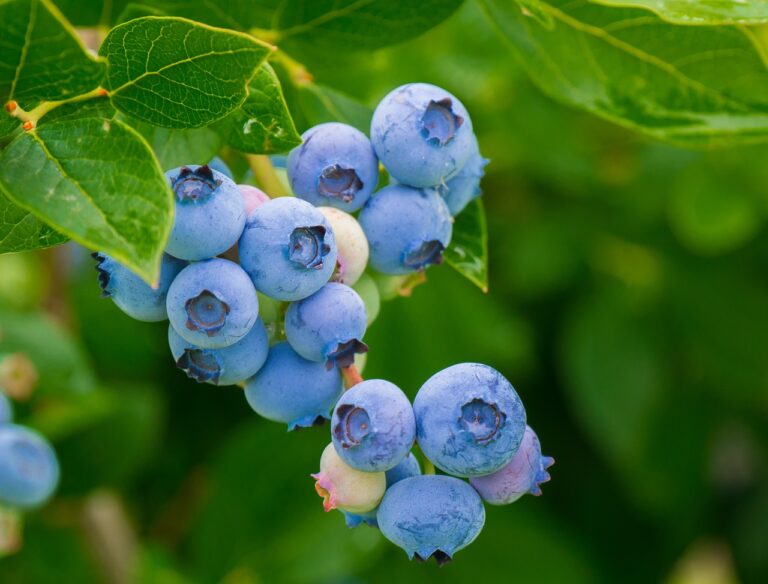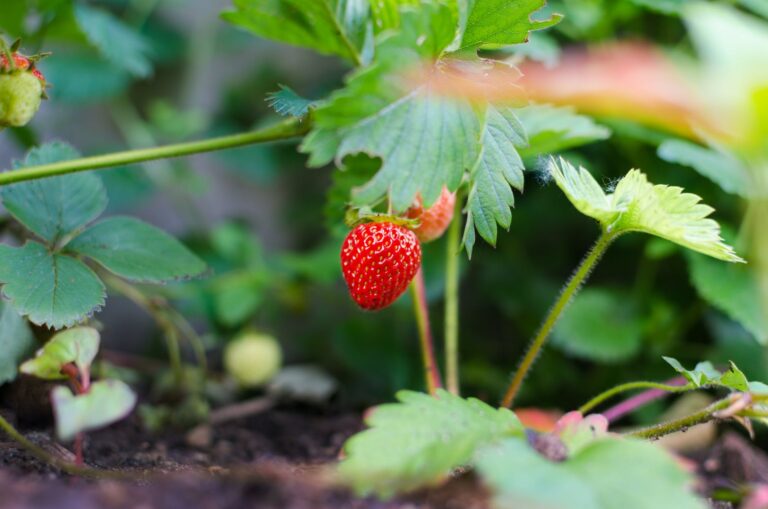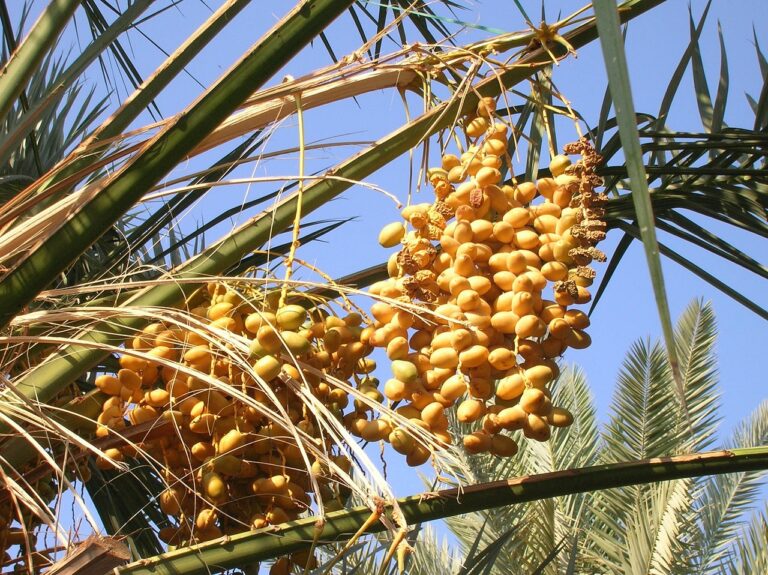Can Pomegranates Thrive in Kenya’s Climate? Unlocking Potential.
The pomegranate fruit is a true wonder. The fruit with its hard, leathery rind and red, juicy interior is packed with juice that contains antioxidants that are believed to prevent heart disease and some cancers.
The fruit has been used for centuries in traditional medicine to treat various ailments. Some studies suggest that consuming pomegranate can lower blood pressure, improve memory, and reduce the risk of developing Alzheimer’s disease.
Can Pomegranate Grow in Kenya?
Kenya has an abundance of fresh fruits such as mangoes, pineapples, bananas, passion fruits among others. However, the question remains – can farmers grow pomegranates in Kenya?
Pomegranates are originally from Iran but are now grown in many parts of the world. It is possible to grow pomegranates in Kenya if the right conditions are met.
In this article, we will explore the suitability of Kenyan climate and soil conditions for growing pomegranates. We will also look at the challenges farmers may face when growing this fruit and its market potential both locally and internationally.
Climate and Soil Requirements for Pomegranate Growth
A Fickle Fruit
Pomegranates are an ancient fruit that originated in Persia, and as such, have very specific climate and soil requirements. These fruits need a warm climate with hot, dry summers and mild winters. They are also susceptible to frost damage, so the temperature must not drop below 14°F (-10°C).
Soil Composition Counts
The ideal soil for pomegranates is well-drained with a sandy texture. The roots of pomegranate trees do not like to be in waterlogged soils. Pomegranate trees also require a pH range of 5.5 to 7.2 to grow optimally.
Kenya’s Climate and Soil Conditions
Kenya is located on the equator, which means it has a tropical climate with no true winter season. However, Kenya’s coastal region has a sub-tropical climate due to its proximity to the Indian Ocean.
The highlands region of Kenya receives up to 40 inches (102cm) of rainfall per year while the coastal region averages around 30 inches (76cm) per year. In terms of soil composition, Kenya’s soils vary widely depending on location because of differences in geology, topography, vegetation types and land use patterns.
When compared to pomegranate’s ideal climatic conditions mentioned earlier in this article, the highland regions in Kenya seem like they could be suitable for growing this fruit crop due to its relatively mild temperatures throughout much of the year compared to other regions in Sub-Saharan Africa which experience more extreme heat stress. However, farmers would need sound irrigation systems given that rainfall distribution is unreliable, especially during critical stages such as flowering until fruit set.
Sources of Pomegranate Seeds or Seedlings in Kenya
One of the main challenges of growing pomegranates in Kenya is the availability of seeds or seedlings. Unlike other fruit trees that are widely cultivated, pomegranates are relatively new to the Kenyan market.
Therefore, farmers may have a hard time finding local suppliers who can provide them with quality seeds or seedlings. However, there are some companies that specialize in providing pomegranate varieties suited for Kenyan conditions.
For instance, Mzuri Sana Agro Ltd supplies high-quality pomegranate seedlings at affordable prices. Other companies such as Elite Agro LLC and Kingsway Farm also supply pomegranate plants though they may be a bit more expensive.
Cost Implications of Acquiring Pomegranate Seeds or Seedlings
The cost of acquiring pomegranate seeds or seedlings varies depending on several factors including the variety, quantity required, and supplier’s location. Generally, it costs around Ksh 300 to Ksh 500 for one grafted seedling.
Farmers need to factor in this cost among other expenses such as land preparation, irrigation system installation, and fertilizer application when budgeting for their farm operations. Though the cost of acquiring pomegranate seedlings may seem high initially, it is important to note that it is a long-term investment with the potential for high returns.
Cultivation Practices for Pomegranates in Kenya
Best Practices for Planting, Pruning, Irrigation, Fertilization, Pest Control, and Harvesting
Pomegranate trees require a lot of care to grow properly. They need to be planted in well-draining soil that is rich in organic matter.
Adequate moisture must be provided through irrigation as pomegranates are very sensitive to drought. During the first few years of growth, pruning is necessary to establish the shape of the tree and promote strong branching.
This will also help increase fruit production as the fruit grows on new shoots that come from old wood. The application of appropriate fertilizers helps with root development and enhances flowering and fruit production.
Pest control is an important aspect of pomegranate cultivation since pests like aphids and thrips can cause significant damage to the developing fruits. Farmers can use integrated pest management (IPM) techniques such as biological control methods, cultural methods like crop rotation or use of pesticides if necessary.
Harvesting should be done at the right time when fruits are fully ripe but before they split open or become overripe. Once harvested, they should be placed in cool storage conditions until ready for consumption.
Challenges That Farmers May Face When Growing Pomegranates in Kenya
Kenyan farmers growing pomegranates may face several challenges including inadequate irrigation facilities which can lead to poor growth and low yields; lack of access to quality seeds or seedlings; limited technical knowledge on optimal cultivation practices for pomegranate crops. Additionally, given that pomegranates are still relatively uncommon in Kenya’s agricultural landscape, there may not yet be established markets for this crop making it difficult for farmers who wish to sell their produce locally or internationally. Overall, while cultivating pomegranates requires dedication and care, it can be a lucrative option for Kenyan farmers who are willing to put in the effort and learn about best practices.
Market Opportunities for Pomegranates in Kenya
Demand for pomegranates in local markets and export markets
Pomegranate fruit is becoming increasingly popular among Kenyans due to its numerous health benefits. As more people become health conscious, the demand for pomegranates is expected to rise steadily. The fruit is used in various ways including making juice, jams, and salads.
In addition to the local market, there is also a growing demand for pomegranates in export markets such as Europe and Asia. This presents a great opportunity for Kenyan farmers who can earn a decent income by exporting the fruit.
Potential income from growing and selling pomegranates
Growing pomegranates can be profitable since the fruit has a high value in both local and international markets. According to research done by the Kenya Agricultural Research Institute (KARI), an acre of land can produce up to 1,500kg of pomegranate fruits per year.
At an average price of Kshs 150 per kilogram, this translates to a gross income of Kshs 225,000 per acre per year. However, it’s important to note that this potential income can only be realized if proper farming practices are followed and there is a reliable market for the fruits.
While it’s true that pomegranate cultivation poses some challenges such as pests and diseases management, it still remains one of the most profitable agribusiness ventures in Kenya today. With proper planning and implementation of best practices alongside good marketing strategies farmers stand to gain immensely from growing this wonderful crop locally or internationally
Conclusion
We have examined the feasibility of growing pomegranates in Kenya by looking at the climate and soil requirements for pomegranate growth, the availability of pomegranate seeds or seedlings in Kenya, cultivation practices for pomegranates in Kenya, and market opportunities for pomegranates in Kenya. We have learned that while Kenya’s climate and soil conditions may not be ideal for pomegranate growth, it is still possible to grow this fruit with proper care and attention. Farmers must acquire high-quality seeds or seedlings from reputable sources and follow best practices for planting, pruning, irrigation, fertilization, pest control, and harvesting.
While growing pomegranates in Kenya may present some challenges, there are also many exciting opportunities for farmers who are willing to take on this fruit crop. With increasing demand both locally and globally for healthy superfoods like pomegranates, there is potential to earn a good income from cultivating this fruit.
By investing time and resources into learning about proper cultivation practices and finding ways to market their harvests effectively, Kenyan farmers could reap significant rewards from growing pomegranates. Overall, we believe that it is feasible to grow this fruit crop successfully in Kenya with the right mindset and approach.







